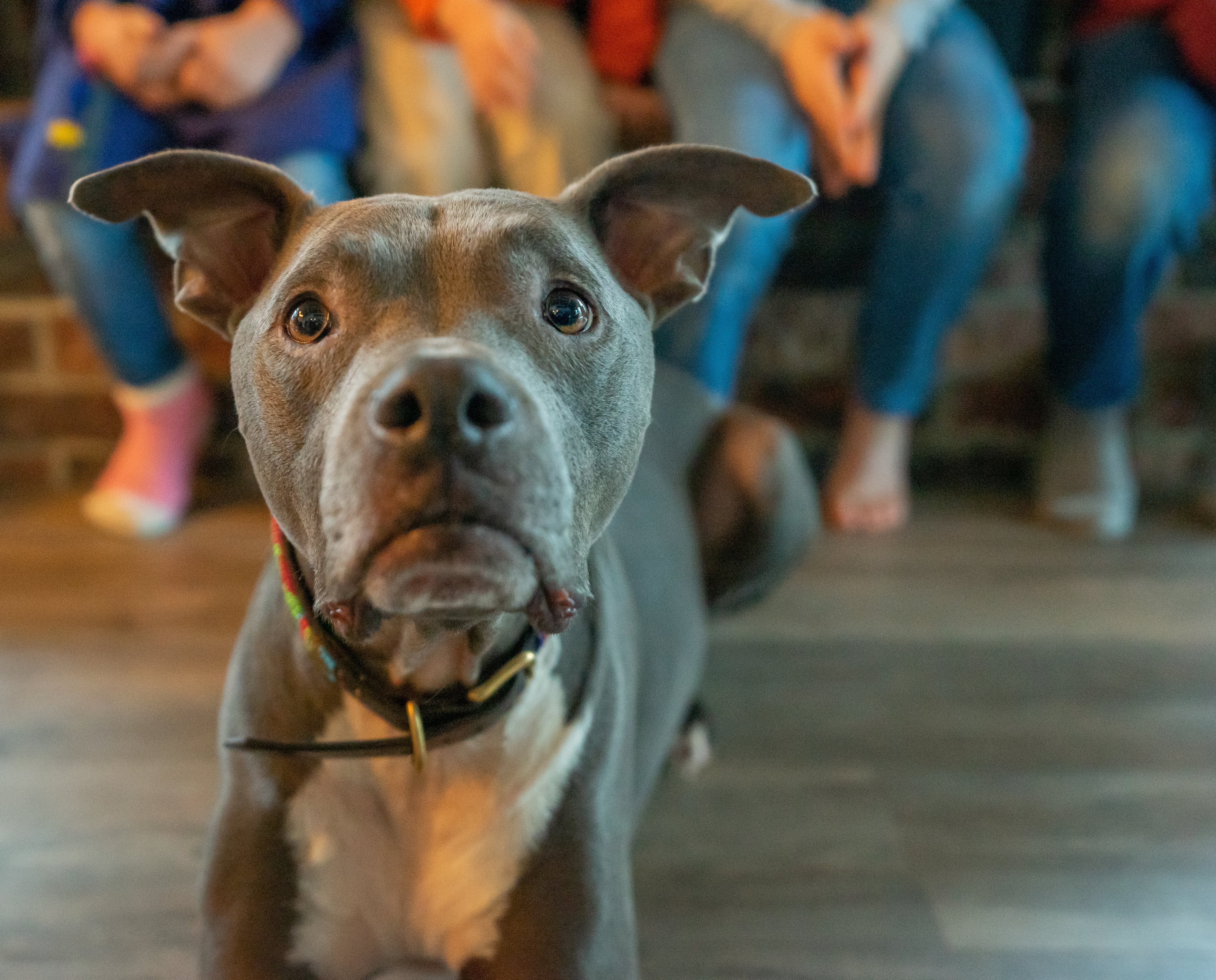
Treating Dog Incontinence: What Is the Difference Between Proin and Incurin?
Treatments for Dog Incontinence
There are many different causes of dog incontinence, some can be temporary and others long-term, some conditions can be treated and others need to be managed. One of the most common causes of dog incontinence and one many senior dogs face is termed urethral sphincter hypotonus or urethral sphincter mechanism incompetence (USMI) otherwise known as a weak bladder. Let's dig into exactly what it means when your dog has a weak bladder and we will take a look at two common medications used in its treatment, Proin and Incurin.
What Is a Weak Bladder?
When a dog has a weak bladder you may start noticing that your dog is leaving wet spots on their bed or blanket, that their fur is damp or they are spending a lot more time cleaning themselves. I remember when my French bulldog Paige started leaving wet spots on my legs when I would have her on my lap. She didn't even realize it was happening.
The volume of leakage can also increase over time as your dog gets older. This leaking of urine is happening because the muscles in the bladder that hold urine become weaker. This condition is more common in spayed females though male dogs can also experience this form of incontinence.
Can Dog Incontinence Be Treated?

Since there are many different causes of dog incontinence there are also several different treatment methods. If the incontinence is the result of a urinary tract infection or an underlying disease there is usually medication that can resolve the incontinence by treating the infection or disease. Sometimes surgery is an option for incontinence caused by a tumor that can be removed or a congenital abnormality that can be corrected. And recently regenerative treatment methods such as stem cells have shown promising results.
For conditions where there is no treatment option or treatment options proved ineffective, pet parents can still find peace of mind in that incontinence can be managed by using products such as dog diapers, belly bands, and incontinence pads or blankets that help to keep your dog dry and protect against unwanted leaks and accidents.
In the case of a senior dog struggling with urinary accidents caused by a weak bladder, there are two medications, Proin® and Incurin®, commonly prescribed that have had some great results. Let's take a look at each option.
What Is the Difference Between Proin and Incurin?
Both medications are used to treat urinary incontinence in dogs caused by weakened urethral sphincter muscles but there are some key differences worth exploring.
Proin - How it Works
The product known as Proin ER™ is an FDA-approved treatment for urinary incontinence due to urethral sphincter hypotonus in dogs. This is a slightly different version of the original Proin drug that provides an extended-release (ER) which means that Proin ER can be given in a once-a-day chewable tablet vs. Proin which needed to be given twice per day. It works by increasing muscle tone to help prevent urinary leakage. Proin can be used to help both male and female dogs.
Proin - Side Effects
Like with all drugs there are side effects to consider. When you are dealing with a senior dog who is likely dealing with a variety of health issues and more than likely on some form of medication already, it is important to work with your veterinarian. Your vet can help to ensure that Proin will be ok for your dog to take given their medical history, and current health status, taking into consideration the medications they are already on.
The common side effects of Proin include loss of appetite, vomiting, diarrhea, tiredness, increased water consumption, weight loss, panting, weakness, fever as well as possible changes in skin color. More severe side effects can include seizures, elevated liver enzymes, kidney failure, rapid heart rate, elevation in blood pressure, abnormal gait, and blood in the urine. I would also like to point out that Proin is not recommended for dogs under ten pounds, or dogs with pre-existing heart disease, high blood pressure, kidney problems, or other conditions that can cause high blood pressure. Also, the extended-release tablets should not be crushed or split.
Proin - Does it Work?
The active ingredient in Proin is phenylpropanolamine and several studies over the years have shown its effectiveness in treating urethral sphincter hypotonus. For example, in a study involving 50 dogs diagnosed with urinary sphincter mechanism incontinence, the dogs were treated for 28 days and given either phenylpropanolamine or a placebo. According to the study, 85.7% of the dogs that were treated with phenylpropanolamine reported no episodes of unconscious urination compared with 33.3 percent of placebo-treated cases.
Incurin - How it Works
Incurin is also an FDA-approved urinary incontinence drug, but unlike Proin, it is used to treat incontinence only in spayed female dogs and not male dogs. The reason for this is the active ingredient in Incurin is estriol which is a natural form of estrogen. When a dog is spayed estrogen decreases and over time this can lead to incontinence. Incurin helps to restore estrogen levels in an attempt to restore the tonal quality of the urethra, which is the neck of the bladder, helping it to strengthen its contraction to avoid leaks.
Incurin - Side Effects
Some of the common side effects of Incurin include vomiting, loss of appetite, anxiety, low energy, increased thirst, swollen vulva, vagnitis, and agression or hyperactivity. Thankfully estriol is a low-dose and short-acting form of estrogen so the risk of estrogen toxicity, which has been linked to bone marrow suppression, is significantly reduced.
Incurin - Does it Work?
At the end of a two-phase owner evaluation study on the effectiveness of Incurin as a treatment for urinary incontinence in ovariohysterectomized (spayed) dogs, 93% of dogs treated were improved or continent by 6 weeks. In safety studies, after receiving the initial dose of 2mg for 14 days if the incontinence has been controlled then the dose can be decreased in controlled steps to find the lowest most effective dose.
Summary of the Differences Between Proin and Incurin
| Proin | Incurin | |
| Active Ingredient | Phenylpropanolamine | Estriol |
| How it Works | Uses a synthetic compound to tighten sphincter muscles | Increases estrogen levels to strengthen urethral muscle tone |
| Who Can Use It | Used for both male and female dogs | Only used for spayed female dogs |
| Possible Side Effects | Vomiting, loss of appetite, diarrhea, excessive salivation, agitation, tiredness, vocalization, confusion, increased water consumption, weight loss, weakness, fever, panting, and reversible changes in skin color | Loss of appetite, vomiting, excessive water drinking, and swollen vulva |
Proin vs. Incurin - Which Should I Try First?

If you have a male dog then you only have one choice which is Proin, but if you have a spayed female dog then there is more to consider. The first thing you will need to do to make this decision is to speak with your veterinarian because not only can they advise you based on your dog's overall health but they can also tell you what their experience has been with each drug. Personally, if I have another senior lady with a weak bladder then I would ask first about Incurin since the list of side effects is less than with Proin, but it would depend on what my vet says, what medications my dog is currently taking, and their overall health status.
It may be that neither is ok for your dog to take or that neither works because there is an underlying cause that may have gone undetected. If that is the case please don't panic. Using a dog diaper, belly band, and/or incontinence pads is a super easy way to manage your dog's incontinence and can quickly become a natural part of your daily routine.
Have you tried Proin or Incurin? Please let me know as I am very interested in learning about your experience in treating dog incontinence using one or both of these medications.
Ann-Marie Fleming is the Founder & CEO of Dog Quality, a provider of innovative assistive products focused on improving the quality of life for older dogs and the families that care for them.

